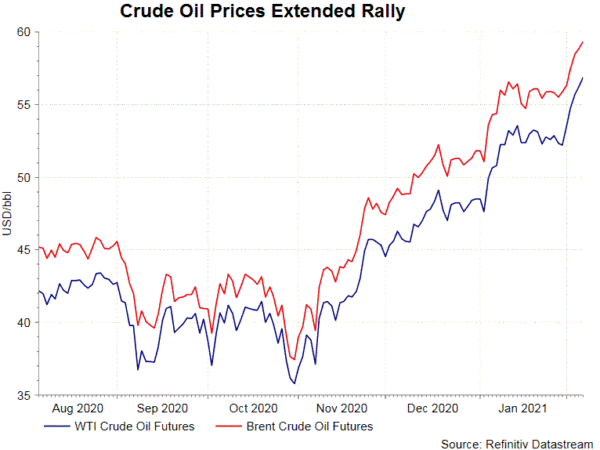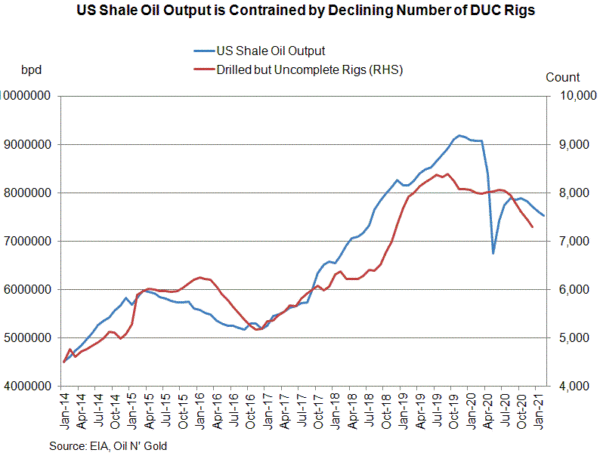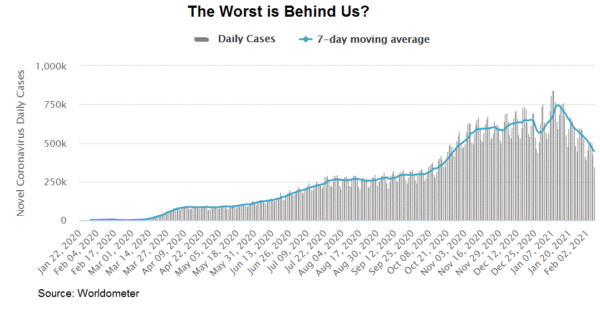Crude oil prices rallied last week, with the front-month WTI and Brent contracts gaining +8.9% and 7.8% respectively. The market was thrilled by Saudi Arabia’s voluntary output cut and increase in export prices. Stabilization in the pandemic also added optimism.However, producers such as Russia are likely to expand production amidst price rally, while the uncertainty in the developments of the pandemic will limit upside of prices.

Saudi Arabia has voluntarily cut output by an additional 1M bpd this month. It will do it again in March. In another surprising move, the kingdom raised selling price of oil exports to the US and European by US$0.1/bbl and US$1.3-1.4/bbl, respectively. Yet, exports price to the Asian market remains unchanged. Separately, a Bloomberg report suggests that OPEC+’s compliance level exceeded 100% in January. The report noted that the alliance’s output was 0.12M bpd less than the agreed 22.12M bpd. Outside of OPEC+, US output has been gradually coming down from last year’s peak of over 11M bpd. Of which the biggest decline come from shale (unconventional) production which contributes to about 63% of US production. The chart below shows that US shale oil output has declined in the last quarter of 2020, after briefly rebounding from May’s low. As the world’s largest producer, US output has been constrained by the declining number of “drilled but uncompleted” rigs. We expect this to continue constraining US output in coming months, despite recent price strength.

On the demand, the theme remains a faster recovery in the second quarter. The total number of new coronavirus cases in the world appears to have peaked in January. Meanwhile, the pandemic can be under control due to vaccination worldwide. The market is hopeful of US president Biden’s target to shot 100M people in 100 days (by April 30). Meanwhile, more than 12M in the UK have had first jab. The government is aiming to offer first doses to 15M people in the first 4 priority groups by February 15.

However, we are not overtly optimistic about the oil market balance and expect limited upside to crude oil prices. Russia will very likely increase output to gain market share and to profit from the price strength. Russia raised its output to 9.1M bpd in December, +0.11M bpd above its quota. The country was allowed to raise production in February and March according to the agreement. Another wild card is Iran. Biden appears open to more engagement with the country, despite refusing to lift sanctions unilaterally. The country has already planned to rapidly ramp up output as soon as sanctions are lifted. It has recently noted that production will return to pre-sanction level (about 4M bpd) in one or two months. The country is currently exempted from the collective output cut deal and produced just about 2M bpd in 2020. Output cuts in Saudi and the US will be partly offset by increases in Russia, Iran and some other producers that wish to benefit from recent price rally.












